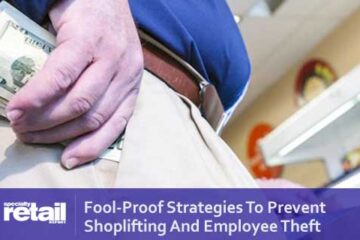“Come to a baby shower!” Or two or three. Surprise! Baby showers or, more precisely, baby gifts are big business. Used to be that baby showers were one to a customer, a way to outfit parents-to-be who were starting from scratch. But the one-time-only gift fest has multiplied: today, family members give a shower, and so do co-workers, neighbors, the best friend, the church group. Not only that: showers aren’t just for a first baby anymore. In recent years, second- and third-timers often get showered, too. And so does the proverbial “second family”: remarriage often produces a second round of first babies—and gifts.
And the gift parade doesn’t don’t stop there: family and friends also buy gifts for “getting born” (or adopted)… for a christening or other religious celebration… and (where did the time go!) baby’s first birthday. Not to mention doting family and friends who buy gifts for no reason except, well, “for the baby.”
My, how it’s grown
So many babies, so many baby events. For specialty retailers, it’s a baby-gift boom. The Gift Association of America (GAA) said it all when they named their workshop Baby, What a Market! According to the Centers for Disease Control (CDC), which keeps count of all those little button noses, more babies are being born in the US now than at any time in the last 30 years: 4,058,814 births in 2000. Right: four million plus. And they all need baby stuff. Hence the proliferation of baby-gift registries. “The baby industry right now is so huge. It’s definitely where retail is,” says Laura Gilbert, owner of The Carlton House gift shop (Houston, TX).
Other social trends contribute to the industry’s growth, too. One is the focus on hearth, home and family (for example, marriage is up, and single-teen motherhood is down). Another: advances in medicine that work miracles—not just “miracle” babies for the childless, but the unprecedented frequency of multiple births, and of first babies born to older women. And the latest wrinkle: in an aggressive ad campaign, the American Society for Reproductive Medicine is encouraging young women to start their families sooner rather than later—and that shift, some speculate, may mean larger families than the current average. All together it spells b-a-b-i-e-s, and where there are babies, there are grown-ups buying baby things.
And they don’t stop buying when babies aren’t babies anymore. For one thing, it’s now customary—a dictate of the new etiquette—to buy gifts for a new baby’s siblings, too. Adrienne Oeding, owner of Babcock Gifts (East Memphis, TN), says “[Many customers] specifically ask for something for little brother or little sister.” To meet that need, Oeding carries “pick-up items” like oversized coloring books and children’s crafts kits and jewelry.
The granny factor
Not to be overlooked is the “granny market.” Grandma and Grandpa, Nana and Papa, Mimi and Pops—whatever the kids call them, many grandparents fit the image of doting older folks who cultivate a unique, rewarding relationship with their grandchildren. Their hearts are deep, and so are their pockets. Glen Trush, president of Cazenovia Abroad (Cazenovia, NY), points out that “Grandparents are looking for keepsake items, and [are] buying more meaningful gifts.” But they buy plenty of fun things, too.
Today’s grandparents are typically younger, healthier and more active than ever. The average age of a new grandparent is just 47, and with a life expectancy of 74.1 for men and 79.5 for women, they have more than 30 years ahead of them—and they’re not planting themselves on porch rockers anytime soon. Generally speaking, they’re busy, mobile, informed (many are college-educated), and financially comfortable—in fact, many still work full-time and aren’t ready to retire.
All of this means they’re able to spend big bucks on grandkids of all ages, and they do: $35 billion a year, according to American Demographics magazine. That’s an average of $500 per year per grandparent. “Grandparents [are] the ones who come in and drop a few hundred bucks” on gifts for grandchildren, says Michael Russo, GAA president. Watch that dollar figure grow as the population of boomer grandparents, now in their late 40sand early 50s, explodes side by side with the grandbaby boom: from 70 million grandparents today to 80 million by 2010, according to AARP projections.
So with the birth rate rising, the grandparent population increasing and other significant trends in play, now is a great timeforspecialty retailers to jump on the bandwagon. Wholesalers offer a huge assortment of products to meet the demand. From time-honored basics and traditional keepsakes to the latest innovations, the category is almost endless—which means it’s fairly easy to find lines that fit in with existing inventory, or expand to a new concept. Here’s a look at some of the latest interesting, even unique, products that are strong sellers.
Baby luxe
A small head of fuzzy hair sports a pink headband; tiny earlobes sparkle with earrings of white cubic zircon in 14k yellow gold. This baby girl has it all, and Mindy Harris, owner of Mindy Harris Juvenile Jewelry (Boca Raton, FL), keeps her supplied in sparkle. Harris sells more than 200 fine jewelry products for baby, toddler and teen, all 14k or 18k gold. Her most popular item: gold screwback earrings in more than 60 styles, each pair packaged in an elegant box. Religious items such as cross pendants on chains, and diaper pins with angel medals, are also popular. All in all, Harris says her annual sales have doubled for each of the past three years.
Baby can’t go to the spa (not yet, anyway!), so the spa is starting to come to baby. Baby spa gifts are hot right now, according to the GAA. In that category is a line of aromatherapy products from Sculptress pour maman et bébé (Cold Spring Harbor, NY). One of them is a soothing diaper cream with lavender and sweet almond oil (along with other fragrant ingredients). Owner Marcelle Connors says that the quality and the packaging were equally important when she was creating her aromatherapy line. She uses pure essential oils in her products. All ingredients are FDA-approved, and all of her products are recyclable. The Baby Shampoo and Body Wash, for example, comes in a bear-shaped honey bottle and looks delicious. Blended with blue chamomile to soothe cradle cap, it’s mild enough that both mother and baby can use it daily. Soon to be released is a “fairy dust nurseryroom spray”that’sdesigned to eliminate diaper odor, and its aroma is said to ease colic. Connors has seen a huge increase in sales, which she attributes to “a more educated consumer [who wants] a true high-quality product, [someone who is] learning about aromatherapy and [is] more environmentally conscious.”
And a silver spoon
Not soft and cuddly but hard, shiny and cold—is this something to give a baby? Definitely, when it’s a traditional baby gift of silver, the stuff that memories and heirlooms are made of. “The [traditional items] live through all the [other] things that come and go, like Beanie Babies,” says Ralph Smith, president of Silver Treasures, Inc. (Fryeburg, ME). Keepsake silver items have higher price points than everyday versions, of course; but sterling silver and silverplate have the lasting value and quality those buyers are looking for. (Sterling silver is a combination of 92.5 percent silver and 7.5 percent base metal, like copper, for strength, and pieces are stamped with “sterling” or “925.” Silverplate is a metal like copper or nickel that’s coated with silver; the better the quality, the more silver coating.)
Traditional silver and silverplate baby items are proven sellers year after year, says Smith—and he should know. He’s been in the business for 13 years, and says sales growth is still 8-9 percent a year. Of the 49 silverplate products his company carries, classics such as barbell-shaped rattles, cups, piggy banks and long-handled spoons continue to be the most popular. For Cazenovia Abroad, the sterling silverplate rattle is the number-one seller. Crafted in several shapes such as lamb, bunny or angel, the rattle is not only attractive, but also meets all of the consumer-protection guidelines for baby safety.
Back to basics
Standard layette items may seem just that—standard—but babies still need the basics: bibs, burp cloths, diapers, undies, jammies—and blankets. Cherie Hammer, owner of Cuddle Bug Baby Products (San Mateo, CA), says parents know that when there’s a bond between baby and security “blankie,” it can be intense—strong enough to send many a panicked parent dashing across parking lots or down airplane aisles toretrieveit.Enter Hammer’s Cuddle Bug blankets. Each one has three textures: terry cloth on the front, flannel on the back, and satin on the edges. “There’s a lot of tactile stimulation, and the terry is great for teething,” she says. The blankets come in five colors, with two nursery-rhyme themes in the ribbon insets: Humpty Dumpty (before his great fall) and Hey, Diddle Diddle. Cuddle Bug also sells functional, attractive, 100-percent cotton “burpies” in five color combinations that coordinate with the other products in the line.
Baby also needs new shoes—and often, because (as every parent knows) baby grows so fast. Kidmocs, adorable leather moccasins for babies and little ones up to age three, “fit” just right as a necessary baby item that’s reasonably priced and irresistible. (Sales are bound to be good based just on that.) Now factor in the home-and-family trend that began a few years ago and peaked as a result of September 11. “Since 9/11, business has skyrocketed,” says Ross Levoy, owner of Leatherwise (Santa Cruz,CA),which sells Kidmocs. “People are thinking about their families. When we do festivals,” he says, “aunts, uncles and grandparents do a lot of gift-buying.” In fact, consumers are now buying more Kidmocs than before: this year, the company is ahead 25 percent, partly because of the outgrow-and-replace factor, and partly because family members indulge in buying them as gifts for their little ones now more than ever.
Safe and snug
oday’s new parents are well informed on all kinds of child-related issues, thanks to the news media, public service ads (such as the “Back to Sleep” campaign), and new opportunities for information exchange on the Internet. One result: baby safety is more closely followed than ever before. “Safety is probably the number-one issue on everything,” says Russo. “[Parents and grandparents are] very attuned to it. [They’re] quick to ask questions: Is the paint toxic? Are these buttons safe?”
Any product that keeps babies safe is a good one. From the usual run of “baby things” (furnishings, clothing, toys) to a wide array of common household items (e.g., mini-blinds), many products have been redesigned for child safety. Manufacturers are responding to the growing awareness and demand not only for products that are baby-safe, but preventive products as well.
One such preventive is it’SUNuff from SciVolutions (Stoughton, MA), a type of skin patch that indicates when the baby or young child has had “enough” sun. Put the patch on the baby, then slather sunscreen on exposed skin as usual, including the patch. When the patch turns red, it’s time to get out of the sun. The it’SUNuff patch not only helps parents prevent a sunburn at the beach—it can ultimately save lives, says Alan Nash, the company’s CEO, because the risk of skin cancer increases 500 percent for someone who has had five serious sunburns before age 18. SciVolutions also sells an assortment of wacky, kid-size bandages in fun designs like puppies or the Simpsons. And all of the company’s products are in innovative, colorful packaging.
Every new parent fears sudden infant death syndrome, or SIDS. According to the American Academy of Pediatrics, 5,000 babies a year in the US alone are SIDS victims. Research has shown that putting babies to sleep on their backs (instead of their tummies—for generations believed to be safest) and removing loose blankets, bumpers and toys from cribs help prevent SIDS. With winter temperatures dipping into single digits in much of the country, the KinderKozy sleep sacque is the answer to keeping the baby warm and safe. “A sleep sacque is a safer alternative to a blanket,”saysClasina Valkenberg of Baby Emporio (Ventura, CA). Designed for infants 3-9 months old, the KinderKozy is a one-piece blanket “bag” (as the word “sacque” implies) that envelopes the baby, but with no loose ends or edges, making it tangle-free as well astoasty. Sacqueswere “usedin Europe for many generations,” says Valkenberg, and many post-WWII American mothers have used them, too—and are starting to use them again. Made of 100 percent polyester polar fleece, the versatile KinderKozy can go over clothing, jammies, or just undershirt and diaper, and is great for the carseat and carrier as well as the crib.
Picture the typical toddler taking her first shaky steps—and her first tumbles. For little ones’ little hurts, Boo-Bunnie Ice Pack from Stephan Enterprises (Pierceton, IN) comes to the rescue. Their number-one seller in a line of 300 products ranging from bibs and blankets to bonnet keepsakes, the Boo-Bunnie is a small, soft bunny whose square body, made of a cotton/poly blend, fits over a reusable “ice pack” filled with distilled water. Just keep it in the freezer and pull it out when needed to soothe the boo-boo and the baby.
Hands-on
It’s never too soon to let little Earthlings get hands-on with the planet, and Hugg-a-Planet (Essex Junction, VT) does just that. You may have already seen one in the movie Baby Boom or K-PAX, or on Malcolm in the Middle, says Robert Forenza, president. Educational and fun, the Hugg-a-Planet is made of 100 percent cotton. These soft, plush, lightweight globes come in three sizes: 6?, 12? or 24?—perfect for little hands. The 12? is also available with place names in French or Spanish. And for a somewhat noisier “world,” there’s also a RattleBabyHugg-a-Planet, which chimes rather than rattles.
Room to grow
Baby gift products sell all year long; they aren’t dependent on holidays like Christmas or Halloween for strong sales. In fact, someone called it the pink-and-blue-chip growth sector, because as long as there are babies, grown-ups will buy baby gifts.


